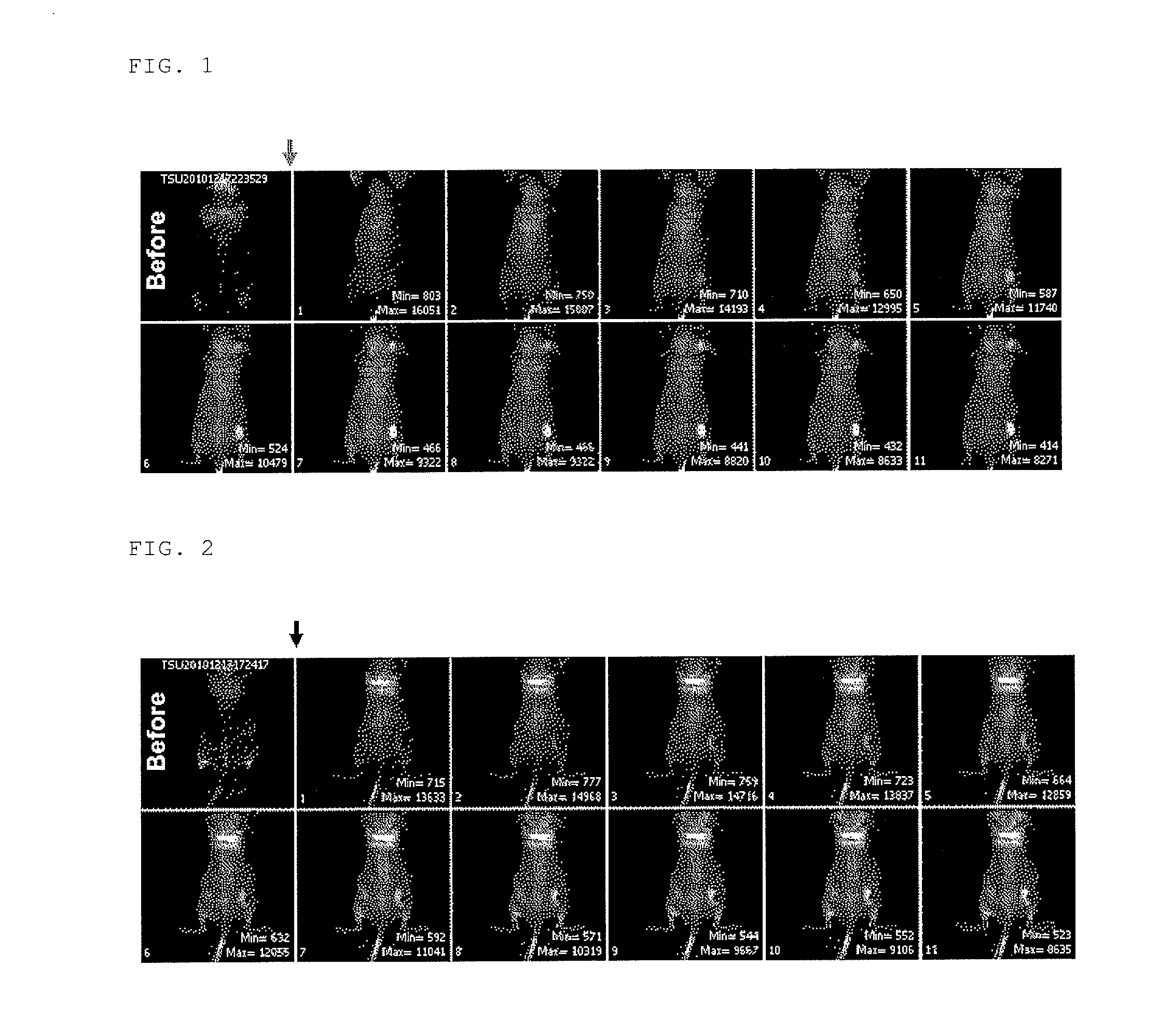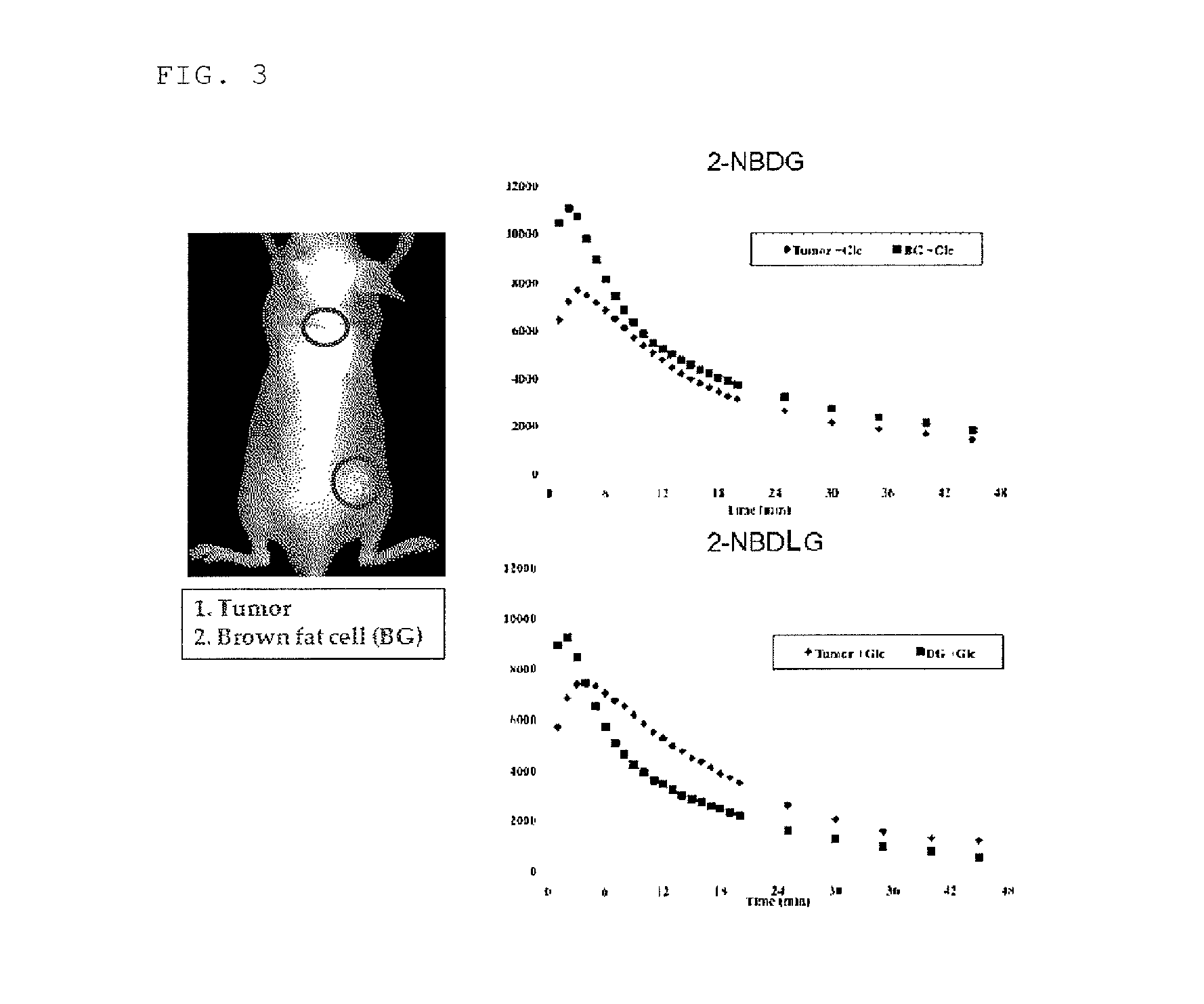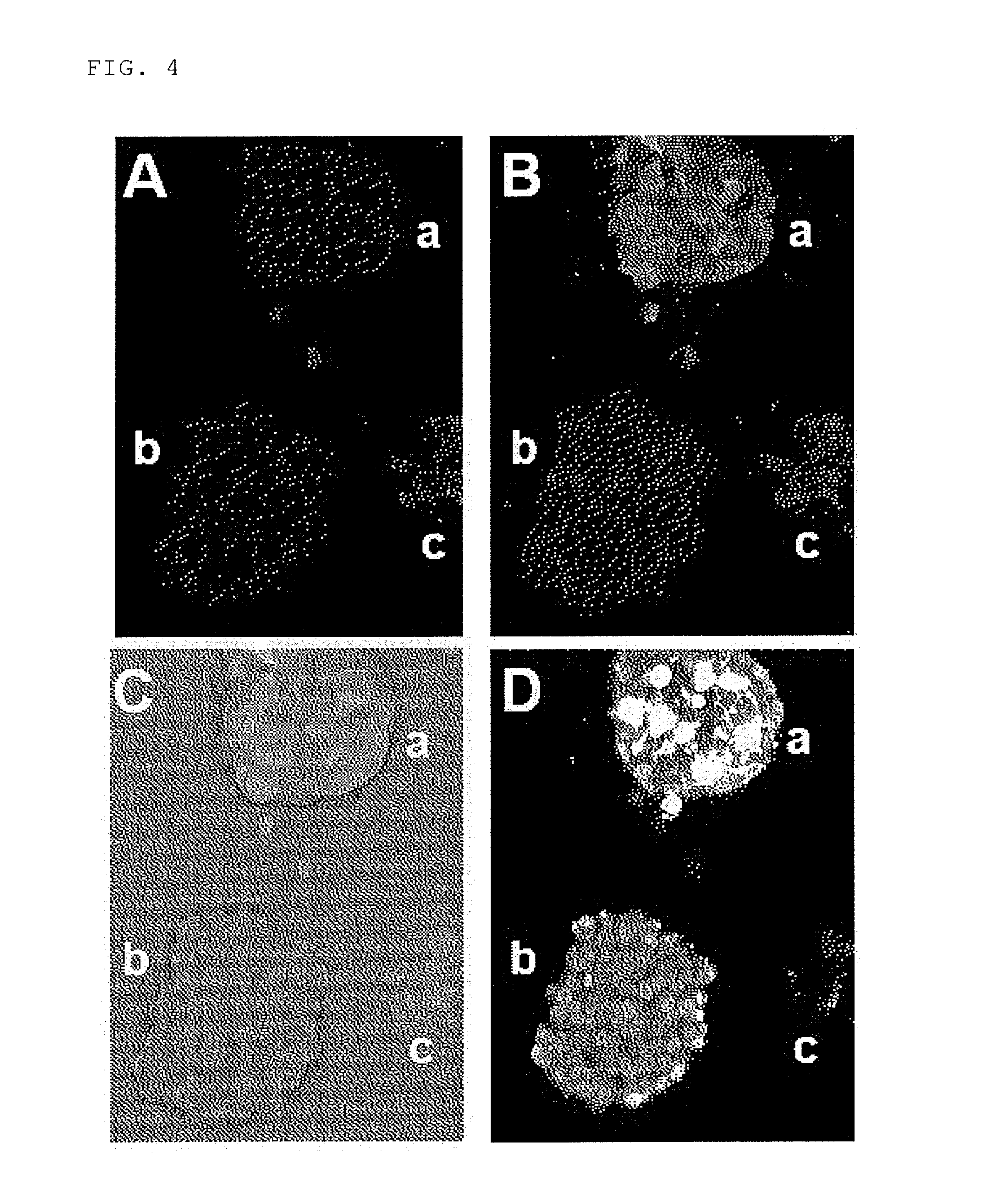Method for detecting cancer cell using fluorescently labeled l-glucose derivative, and cancer cell-imaging agent comprising fluorescently labeled l-glucose derivative
a cancer cell and fluorescently labeled technology, applied in the field of methods, can solve the problems of reducing the operation time, unable to find the lesioned part, and a patient with an extremely heavy burden during diagnosis
- Summary
- Abstract
- Description
- Claims
- Application Information
AI Technical Summary
Benefits of technology
Problems solved by technology
Method used
Image
Examples
example 1
Synthesis of Compound
(1) Synthesis of Fluorescently Labeled L-Glucose Derivative
(1-1) Synthesis of 2-NBDLG
[0105]2-NBDLG was synthesized from L-glucose as described below.
3,4,6-Tri-O-acetyl-L-glucal
[0106]L-glucose (20 g) was dissolved in pyridine (262 ml) and the solution was cooled to 0° C. Acetic anhydride (171 ml) was dropped, and the mixture was stirred overnight at room temperature. After concentration under reduced pressure, a process of performing azeotropy with toluene was repeated 3 times. To the residue was added ethyl acetate, and the mixture was washed with saturated sodium bicarbonate water and saturated saline, and the organic layer was dried over sodium sulfate. Sodium sulfate was filtered off, and the organic solvent was removed by concentration under reduced pressure. The resultant residue was dissolved in dehydrated dichloromethane (115 ml) under an argon atmosphere, and the solution was cooled to 0° C. A 30% hydrogen bromide acetic acid solution (61 ml) was dropped...
reference example 1
Synthesis of Comparative Compound
(1) Synthesis of Fluorescently Labeled D-Glucose Derivative
(1-1) Synthesis of 2-NBDG
[0162]2-NBDG was synthesized according to a method described in non-patent document 5.
(1-2) Synthesis of Fluorescently Labeled L-Mannose
[0163]In the present invention, L-glucose which is an enantiomer of D-glucose as a native form hexose present in a large amount in the natural world and is non-native form not found in the natural world was used as the sugar skeleton to which a fluorescent group is linked. On the other hand, the present inventors have newly synthesized 2-Deoxy-2-[N-(7-nitrobenz-2-oxa-1,3-diazol-4-yl)amino]-L-mannose (2-NBDLM), as a fluorescently labeled L-mannose derivative having a skeleton composed of L-mannose which is an enantiomer of D-mannose as a hexose present in a large amount in the natural world and is non-native form.
Benzyl 4, 6-O-benzylidene-α-L-glucopyranoside
[0164]L-glucose (6 g) was suspended in benzyl alcohol (173 ml). At room tempera...
example 2
Investigation Using Mouse Transplanted with Tumor Cells (C6 Glioma)
(Experimental Methodology)
(1) Preparation of Rat Glioma Cells (C6) for Transplantation
[0178]C6 cells were prepared according to an ordinary method so that the cell number was 2×107 cells / mL.
(1-1) Culture of C6 Cells
[0179]C6 cells were seeded on a 10 cm petri dish, allowed to stand still in a CO2 incubator, and cultured at 37° C. The culture medium was exchanged once every two days.
(1-2) Composition of the Culture Medium Used for Culture of C6 Cells
[0180]1 g / L glucose-containing Dulbecco's modified Eagle's Medium (DMEM) (Nacalai No. 08456-65), to which Fetal Bovine Serum (Equitech-Bio SFBM) was added so that the final concentration was 10% and penicillin-streptomycin (Nacalai No. 26253-84) was added so that the final concentration was 1%, was used.
(2) Preparation of Tumor Model Mouse
[0181]5 to 6-week old athymic nude mice (BALB / cAJcl-nu / nu) were transplanted with 50 μL of a cell suspension adjusted to 2×107 cells / mL s...
PUM
| Property | Measurement | Unit |
|---|---|---|
| Capacitance | aaaaa | aaaaa |
| Color | aaaaa | aaaaa |
| Fluorescence | aaaaa | aaaaa |
Abstract
Description
Claims
Application Information
 Login to View More
Login to View More - R&D
- Intellectual Property
- Life Sciences
- Materials
- Tech Scout
- Unparalleled Data Quality
- Higher Quality Content
- 60% Fewer Hallucinations
Browse by: Latest US Patents, China's latest patents, Technical Efficacy Thesaurus, Application Domain, Technology Topic, Popular Technical Reports.
© 2025 PatSnap. All rights reserved.Legal|Privacy policy|Modern Slavery Act Transparency Statement|Sitemap|About US| Contact US: help@patsnap.com



